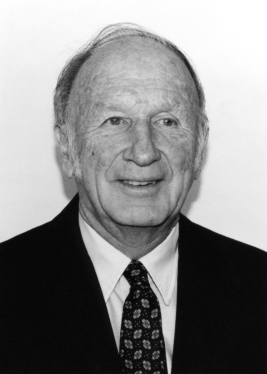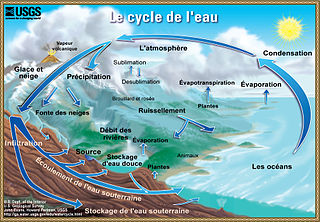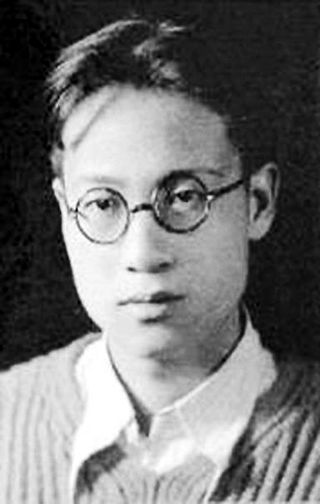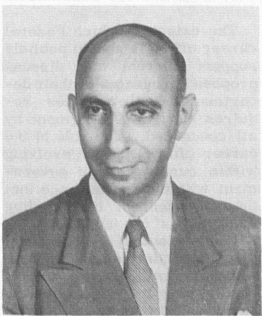
Meteorology is a branch of the atmospheric sciences with a major focus on weather forecasting. The study of meteorology dates back millennia, though significant progress in meteorology did not begin until the 18th century. The 19th century saw modest progress in the field after weather observation networks were formed across broad regions. Prior attempts at prediction of weather depended on historical data. It was not until after the elucidation of the laws of physics, and more particularly in the latter half of the 20th century, the development of the computer that significant breakthroughs in weather forecasting were achieved. An important branch of weather forecasting is marine weather forecasting as it relates to maritime and coastal safety, in which weather effects also include atmospheric interactions with large bodies of water.

Piers John Sellers was a British-American meteorologist, NASA astronaut and Director of the Earth Science Division at NASA/GSFC. He was a veteran of three Space Shuttle missions. Sellers attended Cranbrook School, Cranbrook, Kent, United Kingdom, until 1973, and achieved a bachelor's degree in ecological science from the University of Edinburgh in 1976. In 1981 he gained a doctorate in biometeorology from the University of Leeds. In 2011, Sellers retired from the NASA Astronaut Corps.

The American Meteorological Society (AMS) is the premier scientific and professional organization in the United States promoting and disseminating information about the atmospheric, oceanic, and hydrologic sciences. Its mission is to advance the atmospheric and related sciences, technologies, applications, and services for the benefit of society.

Edward Norton Lorenz was an American mathematician and meteorologist who established the theoretical basis of weather and climate predictability, as well as the basis for computer-aided atmospheric physics and meteorology. He is best known as the founder of modern chaos theory, a branch of mathematics focusing on the behavior of dynamical systems that are highly sensitive to initial conditions.

Tor Bergeron was a Swedish meteorologist who proposed a mechanism for the formation of precipitation in clouds. In the 1930s, Bergeron and W. Findeisen developed the concept that clouds contain both supercooled water and ice crystals. According to Bergeron, most precipitation is formed as a consequence of water evaporating from small supercooled droplets and accreting onto ice crystals, which then fall as snow, or melt and fall as cold rain depending on the ambient air temperature. This process is known as the Bergeron Process, and is believed to be the primary process by which precipitation is formed.

Hydrometeorology is a branch of meteorology and hydrology that studies the transfer of water and energy between the land surface and the lower atmosphere. Hydrologists often use data provided by meteorologists. As an example, a meteorologist might forecast 2–3 inches (51–76 mm) of rain in a specific area, and a hydrologist might then forecast what the specific impact of that rain would be on the local terrain.

Ye Duzheng was a Chinese meteorologist and academician at the Chinese Academy of Sciences.

Helmut Erich Landsberg (1906–1985) was a noted and influential climatologist. He was born in Frankfurt, Germany, February 9, 1906 and died December 6, 1985 in Geneva, Switzerland while attending a meeting of the World Meteorological Organization. Landsberg was an important figure in meteorology and atmospheric science in education, public service and administration. He authored several notable works, particularly in the field of particulate matter and its influence on air pollution and human health. He is the first to write in English about the use of statistical analysis in the field of climatology and implemented such statistical analysis in aiding military operations during World War II. He received a number of significant honors during his life. Several honors are now bestowed in his name in recognition of his contributions to his field.

Pete William Delkus is the Chief Meteorologist at Tegna-owned and ABC-affiliated WFAA-TV in Dallas, Texas, United States.

Mojib Latif is a German meteorologist and oceanographer of Pakistani descent. Latif graduated with a Diplom in meteorology in 1983. He took a position as scientist at the Max Planck Institute for Meteorology in 1985. In 1987 he earned a Ph.D. in oceanography from the University of Hamburg. In 2003 he became professor at IFM-GEOMAR, Kiel, the Leibniz Institute of Marine Sciences. Mojib Latif is a regular guest at TV discussions about global warming.
Katrina O. Voss is a science writer and former bilingual broadcast meteorologist for The Weather Channel Latin America and AccuWeather. She is a science and research writer at Penn State’s Eberly College of Science and has contributed to a number of scientific journals and magazines, including New Scientist, The Humanist, Free Inquiry, and Bulletin of the American Meteorological Society. In 2006, in the wake of Hurricane Katrina, she wrote about the psychological effects of sharing a name with a hurricane, pointing out that the majority, if not all, of hurricanes had been named after women.

Ernest Gold CB DSO OBE FRS was a British meteorologist.

The GEOMAR - Helmholtz Centre for Ocean Research Kiel (GEOMAR), formerly known as the Leibniz Institute of Marine Sciences, is a research institute in Kiel, Germany. It was formed in 2004 by merging the Institute for Marine Science with the Research Center for Marine Geosciences (GEOMAR) and is co-funded by both federal and provincial governments. It was a member of the Leibniz Association until 2012 and is coordinator of the FishBase Consortium. Since 2012 it is member of the Helmholtz Association and named GEOMAR - Helmholtz Centre for Ocean Research Kiel. The institute operates worldwide in all ocean basins, specialising in climate dynamics, marine ecology and biogeochemistry, and ocean floor dynamics and circulation. GEOMAR offers degree courses in affiliation with the University of Kiel, and operates the Kiel Aquarium and the Lithothek, a repository for split sediment core samples.

The International Society of Biomechanics, commonly known as the ISB, is a society dedicated to promoting biomechanics in its various forms. It promotes the study of all areas of biomechanics at the international level, although special emphasis is given to the biomechanics of human movement. The Society encourages international contacts amongst scientists, promotes the dissemination of knowledge, and forms liaisons with national organizations. The Society's membership includes scientists from a variety of disciplines including anatomy, physiology, engineering, orthopedics, rehabilitation medicine, sport science and medicine, ergonomics, electro-physiological kinesiology and others.
The International Meteorological Organization Prize is awarded annually by the World Meteorological Organization (WMO) for outstanding contributions in the field of meteorology and, since 1971, the field of operational hydrology.
Pancheti Koteswaram was an Indian meteorologist, hydrologist, atmospheric physicist and the Director-General of Observatories of Government of India. He was a professor at University of Chicago, University of Hawaii, University of Miami and Tehran University and served as a research associate at National Hurricane Research Laboratory, Miami, and the National Centre for Atmospheric Research, Colorado. A former vice-president of World Meteorological Organization (WMO), Geneva, he was an elected Fellow of the Indian Academy of Sciences, Indian National Science Academy and the Andhra Pradesh Academy of Sciences. The Government of India awarded him the third highest civilian honour of the Padma Bhushan, in 1975, for his contributions to science.
Elizabeth Pattey is a principal research scientist at Agriculture and Agri-Food Canada (AAFC) and the leader of the micrometeorology laboratory at the Ottawa Research and Development Centre. Her research supports nationwide improvement in the environmental performance of agriculture, in support of the United Nations' Framework Convention on Climate Change and Canada’s Clean Air Act. She is the co-author for over 80 peer-reviewed scientific publications, and her areas of expertise include trace gas flux measurement techniques, process-based models, and remote-sensing applications.

Jose Dolores Fuentes is a meteorologist at Pennsylvania State University. His research focuses on surface-atmosphere interactions that control the transport of energy and trace gases in the lower atmosphere. In particular, he has gained media attention for his research into the relationship between air pollution and bees.
Panmao Zhai is a Chinese climatologist, Secretary General of the Chinese Meteorological Society, and one of six co-chair of the Intergovernmental Panel on Climate Change working groups.













